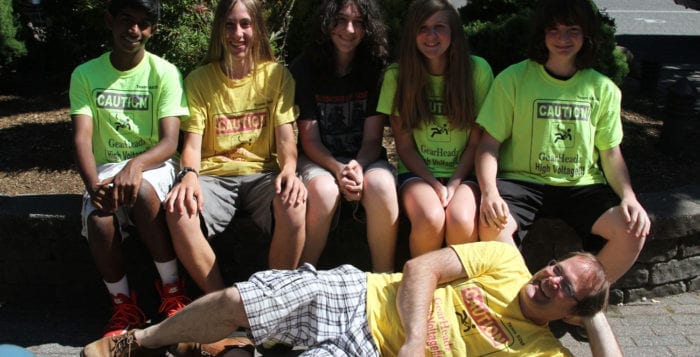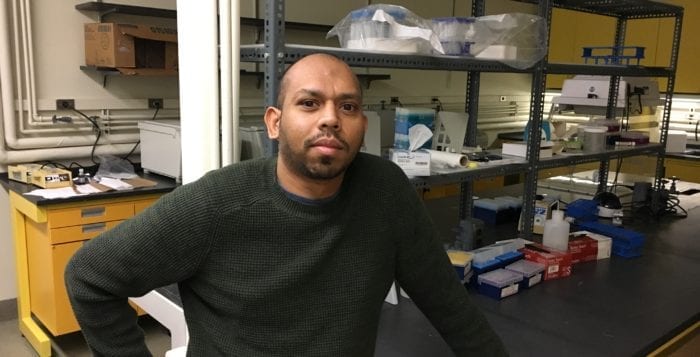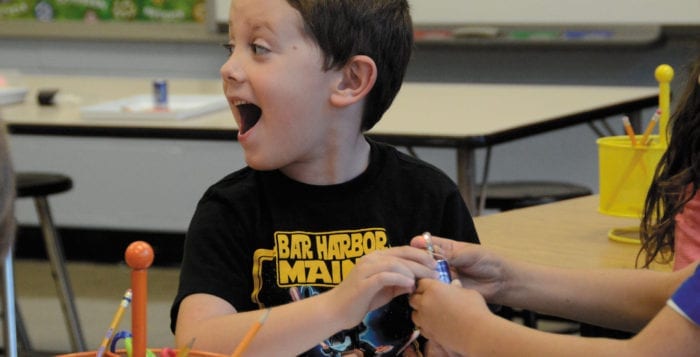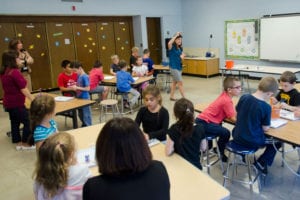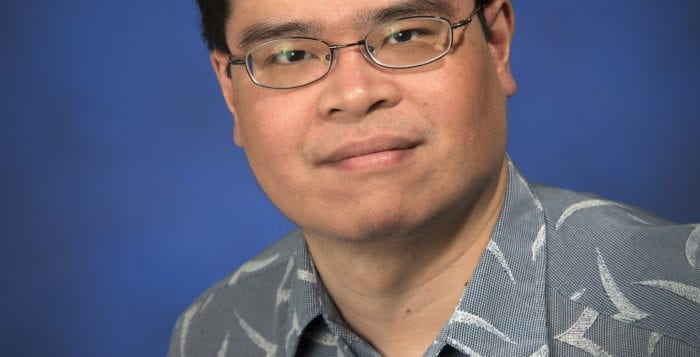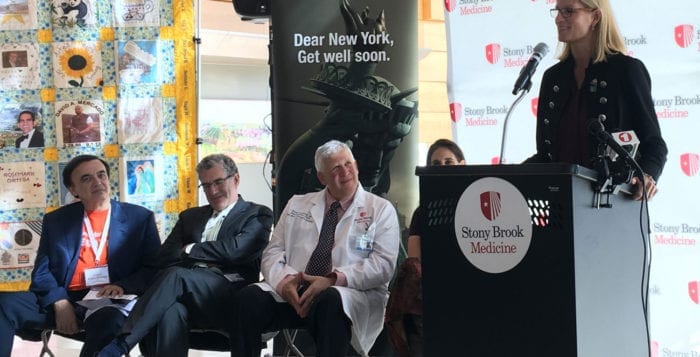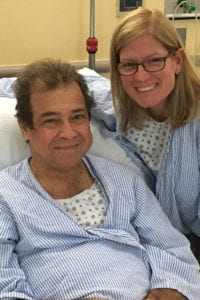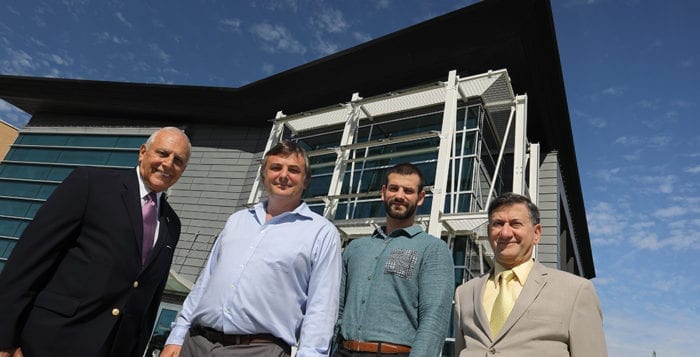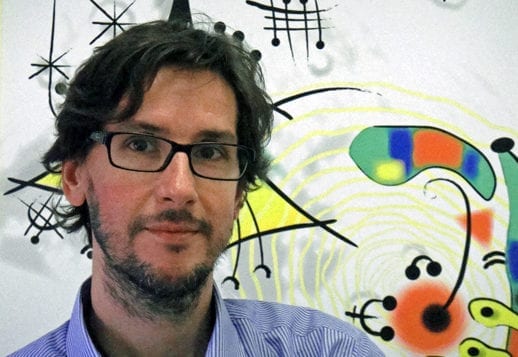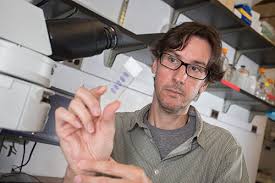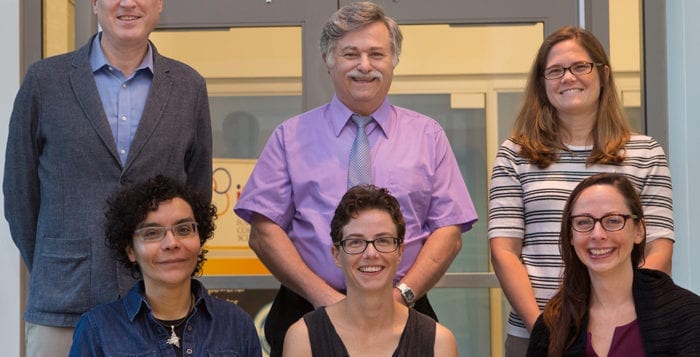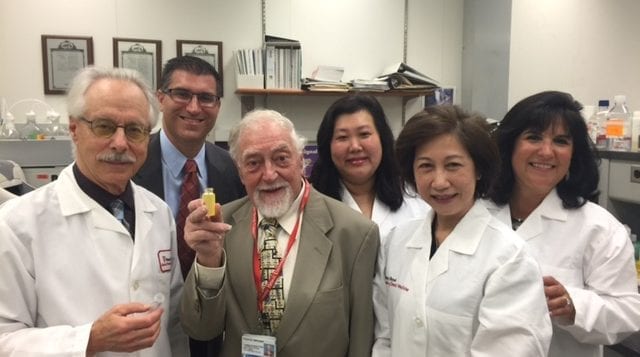“It’s finally happening,” award-winning Rocky Point-area robotics coach Chris Pinkenburg said. “After six years in the making we will have a FIRST Robotics Competition team.”
This was the goal for him and his GearHeadz since day one. The team competed in lower divisions in the FIRST LEGO League to build experience and grow to be able to compete in the higher-level league.
In February, the team was crowned Second Place Champions in the FLL Long Island Championship Tournament and went on to represent the area in the North American Open Invitational Championship Tournament in May. The GearHeadz competed against 74 teams — all regional and state champions from the U.S. and Canada, as well as international guests from Germany and South Korea.
The team’s hard work paid off, as the GearHeadz claimed second place in programming in its final year as an FLL team. This award recognizes a team that utilizes outstanding programming principles, including clear, concise and reusable code that allows their robot to perform challenge missions autonomously and consistently. The team also placed in fifth place overall.
“It’s very heartening to see kids involved in this kind of work. We’re proud of what they have been able to accomplish and we wish them more success in the future.”
— Jane Alcorn
It is the second championship win in a row for two members, and the third championship win for two of the founding members.
As a result of its continued growth, the GearHeadz gained a new science connection.
The GearHeadz now have affiliation with the Tesla Science Center at Wardenclyffe in Shoreham, and the future collaboration will help the team as it ventures into the FRC.
A more advanced team needs more space than the Pinkenburgs’ basement, which is where the team currently practices and builds.
“Space is the biggest problem, so I approached the Tesla Science Center in April or May to see if they would be interested to host a robotics team,’ Pinkenburg said. “They are absolutely in favor of this. It also fits well into their plans for the science center.”
The Tesla Science Center, while currently working on turning some of the lab into a museum, is also working on hosting space for local community groups and an incubator where scientists can conduct experiments, build and share ideas. While the space is not going to be ready for this upcoming season, which begins in January, the plan is to move to permanent housing next season.
“With the Tesla Science Center we have a long-term future,” Pinkenburg said.
The center’s president, Jane Alcorn, hopes the partnership will give the team more visibility and said it’s exactly the kind of thing the site wants to foster and work with and would like the team to one day be Tesla’s GearHeadz.
“Since Tesla is one of the fathers of robotics it seems very appropriate,” she said. Nikola Tesla also invented the first remote control. “Part of our mission is to have groups like this.”
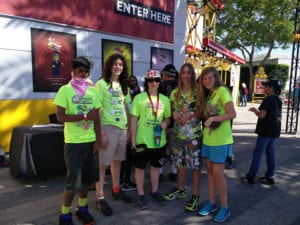
But besides space, an FRC team needs more money. That’s where Bohemia-based North Atlantic Industries came in. The organization contacted Pinkenburg after FIRST pointed it in Rocky Point’s direction. The company offered to sponsor the GearHeadz with up to $6,000 dollars in matching funds.
“This was really great news,” Pinkenburg said. “It was the breakthrough we needed.”
In order to compete in 2017, the GearHeadz must raise at least $15,000 to purchase equipment and pay the FRC fees. The six-week season begins in January, but the team must come up with the funding by mid-November. So far, the group has raised close to $3,000, and the matching grant enables the team to pay for the $6,000 registration fee that is due this month.
The registration comes with a robot base kit and one competition, which will take place from the end of March to the beginning of April at Hofstra University.
“We still need additional material for the robot — you are allowed to spend $4,000 but my guess is that it’ll be around $1,500,” Pinkenburg said. “We need tools — we have some promises for donations in that department already — and we would like to participate in a second competition, which is another $4,000. That’s where the $15,000 comes from. If we match the money from North Atlantic Industries we’ll be close to this.”
Pinkenburg said from his team’s past experience he believes the GearHeadz are well-prepared to have a good start in its new division. Since it’s a community-based team — not limited by school district boundaries when accepting new members — he hopes that the team can continue to grow.
“I hope that this will turn into something where many kids from the North Shore communities profit from,” he said.
Information about the team and a sponsor form may be found on the GearHeadz’ website at www.rockypointroboticsclub.com. The group also set up a GoFundMe site: www.gofundme.com/Gearheadz.
“We’re excited to see what this robotics club can do, especially since they’re doing so well,” Alcorn said. “It’s very heartening to see kids involved in this kind of work. We’re proud of what they have been able to accomplish and we wish them more success in the future.”

